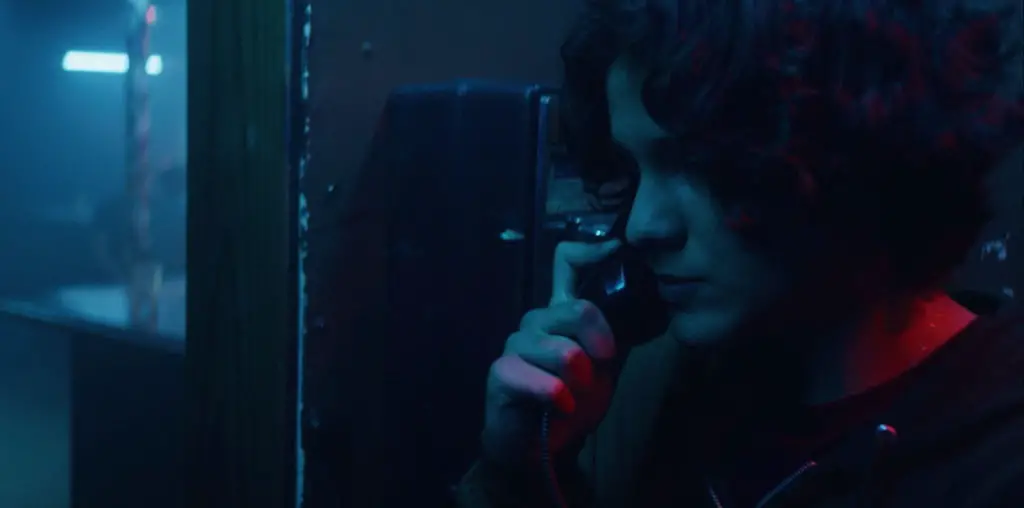
BOOTLEG FILES 398: “Numa Numa” (2004 viral video featuring Gary Brolsma lip-syncing a Romanian pop ditty).
LAST SEEN: Yes, it is still on the Internet.
AMERICAN HOME VIDEO: None.
REASON FOR BOOTLEG STATUS: An Internet meme that websurfers just love to copy.
CHANCES OF SEEING A COMMERCIAL DVD RELEASE: It runs less than two minutes!
“Ma-I-A-Hi! Ma-I-A-Hu! Ma-I-A-Ho! Ma-I-A-Ha-Ha!” Yup, anyone who has wasted far too much time watching videos over the Internet will recognize those Romanian-language lyrics. And while most people may not know that the lyrics come from a song called “Dragostea din tea” performed by the group O-Zone, they surely know it by the name of a viral video that put into digital pop culture: “Numa Numa.”
Back in late 2004, a 19-year-old in New Jersey named Gary Brolsma decided to have some fun with his webcam. With “Dragostea din tea” playing for a soundtrack, Brolsma lip-synced along to the music.
However, Brolsma – a chubby, bespectacled young man – went far beyond the normal limits of lip-syncing. Channeling a spirit of lunacy associated with characters in Tex Avery cartoons, Brolsma created a lip-sync routine for the ages. Stretching his mouth across his broad face, waving his arms in wild abandon, arching his eyebrow to musical notes and offering facial assaults directly at the camera, Brolsma spun a wild burst of frenetic energy. And even more remarkable was that he never left his chair – while he rocked his body from a sitting position, his webcam only captured him from the collarbone up.
Although his webcam video was somewhat grainy and ran less than two minutes, Brolsma must have thought that he created something of entertainment value. On December 6, 2004, Brolsma uploaded his video to Newgrounds.com, one of the leading online video sites in the years before YouTube’s ascension.
What happened next, of course, made history. Initially relying solely on word-of-mouth buzz, Brolsma’s video began to attract attention. Known as “Numa Numa” (since no non-Romanians could pronounce “Dragostea din tea”), the video created a sensation and quickly took off as an Internet meme. The mainstream media, which was still finding its way into understanding how the Internet culture operated, hooked on to the story of this unlikely little video’s popularity. “Good Morning America,” CNN, VH1 and the New York Times covered “Numa Numa.” Within two months of its debut, it was seen by more than 2 million people.
Over time, the video was bootlegged and copied by numerous Net-video addicts. Some people took the O-Zone song for their own version of “Numa Numa.” A video of sailors on a U.S. Navy carrier dancing and lip-syncing to the tune was one of the most lively, and there were also mash-ups featuring characters from the “Star Wars” films and the “SpongeBob SquarePants” cartoons singing the wacky Romanian lyrics.
But the original was still the champ. In 2008, the Guinness Book of World Records estimated that “Numa Numa” was seen 700 million times – with most of these views coming on bootlegged copies posted around the Internet.
Tom Fulp, president and webmaster of Newgrounds.com, told the New York Times in February 2005 that the sheer strangeness of the video made it instantly appealing. “You see it and you kind of impulsively have to send it to your friends,” he said.
But why did this video, of all things, become such a sensation? The answer, it seems, is both simple and cruel: people like to laugh at fat guys behaving foolishly.
The combination of girth and mirth is a tradition in entertainment. Indeed, no less a figure than William Shakespeare served up the waistline-stretching laughs with his character of Sir John Falstaff, whose comic relief supporting presence in the two dramatic “Henry IV” plays was so intense that he was brought back as the center of attention in the comedy “The Merry Wives of Windsor.”
During the 20th century, movies and television always had the XXL-sized guys getting into some sort of mayhem. John Bunny and Roscoe “Fatty” Arbuckle cut up the silent screen, while the likes of Oliver Hardy, Curly Howard and Lou Costello were getting into all sorts of mischief in the 1930s and 1940s. When television took over American living rooms in the 1950s, big guys like Jackie Gleason and Jack E. Leonard used their weight to comic advantage. The late John Candy and Chris Farley successfully wobbled from the small screen to the big screen, while funnymen Kevin James, Billy Gardell, Cedric the Entertainer and Jonah Hill are now Hollywood’s reigning comic chubbies
With “Numa Numa,” the surprise is watching the hefty young Brolsma explode into such zany mania. If the dancer was a skinny guy or even a woman, it would not be as much fun. But watching a large guy shake his stuff with such kinetic abandon was, for better or worse, a marvelous guilty pleasure.
Indeed, it is not surprising that the other uber-popular Internet meme to emerge at that time – the so-called “Star Wars Kid” – also included a fat young man. But in that case, people were laughing at that poor guy because the video was posted without the embarrassed subject’s permission. Brolsma, however, posted “Numa Numa” on his own and, I assume, he wanted people to laugh with him, not at him.
However, the attention that Brolsma received overwhelmed him. When the New York Times sought him out for an interview in February 2005, he refused to cooperate. The newspaper reported that he stopped acknowledging media inquiries (he cancelled a “Today” appearance) and remained secluded in his family’s home, only venturing out to report to his job at a local Staples.
By 2006, however, Brolsma had a change of heart about being a celebrity. He returned with a follow-up video called “New Numa,” and spent the next five years trying to cash in on his original notoriety.
“Numa Numa” is still being viewed – Brolsma’s YouTube page continues to get new comments from people still watching this seven-year-old video. And, perhaps, more than a few viewers are eager to become the next Net sensation with their own silly video antics. “Ma-I-A-Hi! Ma-I-A-Hu! Ma-I-A-Ho! Ma-I-A-Ha-Ha…”
IMPORTANT NOTICE: The unauthorized duplication and distribution of copyright-protected material, either for crass commercial purposes or profit-free s***s and giggles, is not something that the entertainment industry appreciates. On occasion, law enforcement personnel boost their arrest quotas by collaring cheery cinephiles engaged in such activities. So if you are going to copy and distribute bootleg material, a word to the wise: don’t get caught. Oddly, the purchase and ownership of bootleg DVDs is perfectly legal. Go figure!

